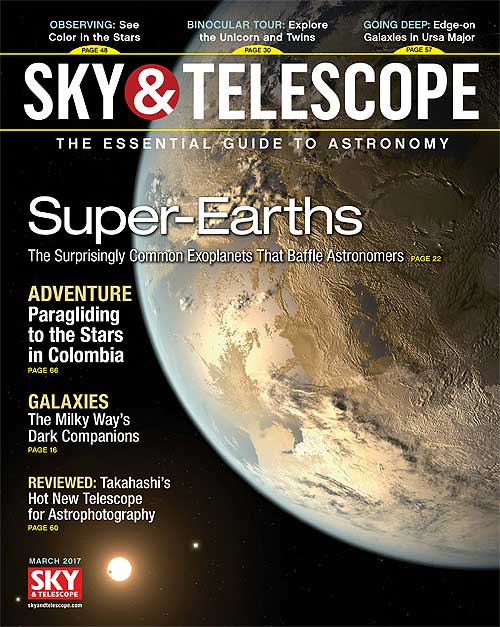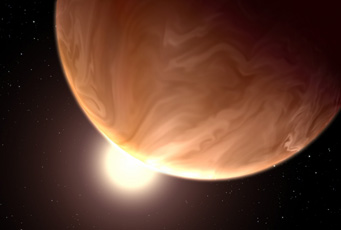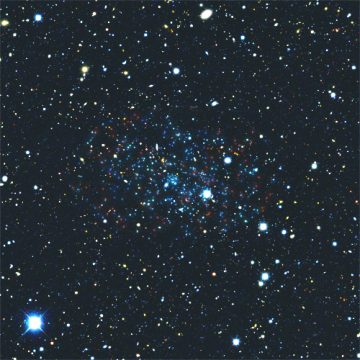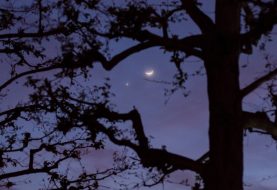 Super Earths, Wimpy Galaxies
Super Earths, Wimpy Galaxies
For decades, the solar system gave astronomers the completely wrong idea of what planets dominate the galaxy. Rather than terrestrial planets or gas giants, it turns out the most common planet type is a super-Earth, sometimes also called a mini-Neptune. But what characterizes a super-Earth — and just how likely are they to be habitable? Those are the questions Shannon Hall addresses in this month's feature story.
Likewise, a look into our galaxy's surroundings has long given us the incorrect impression that the Milky Way has only a few dwarf galaxy companions, but scientist Keith Bechtol catches us up on the recent wave of discoveries of ultra-faint galaxies and what they tell us about our galaxy.
Tour our galaxy yourself tonight — grab a pair of binoculars and bring the observing targets from Mathew Wedel's article for a seasonal tour of the Milky Way. A deeper look offers plenty more to explore within Venus, Leo Minor, and Ursa Major. Clear skies!
Feature Articles

NASA / ESA / G. Bacon (STScI)
The Milky Way’s Dark Companions
As the search for our galaxy’s satellites accelerates, so-called ultra-faint dwarf galaxies may help answer fundamental questions about the universe.
By Keith Bechtol
The Secrets of Super-Earths
The galaxy is teeming with planets that have no parallel in our solar system and were once thought impossible.
By Shannon Hall
Wandering the Winter Milky Way
Grab your binoculars and head outdoors for this seasonal sky tour.
By Mathew Wedel
Launching Astronomy into the Wilds of Colombia
Packing two telescopes, we crossed backcountry little reached by science educators to spread excitement about both ecology and the universe.
By Marja Seidel & Kira Buelhoff
Beyond the Printed Page

V. Belokurov & S. Koposov
What Makes a Planet Habitable?
In our March 2017 issue we include a diagram of all small, confirmed exoplanets in their stars’ habitable zones. Here’s the saga of how we decided which planets to put on that list.
Ultra-faint Companions to the Milky Way: A Gallery
Peruse images of ultra-faint galaxies, covered in the March 2017 issue. Surveys are accelerating discoveries of these elusive companions to the Milky Way.
Star Parties
Find a listing of major 2017 star parties in the U.S. Also, visit our Events Calendar to peruse listings of star parties, astronomy lectures, workshops, and other events.
Lunar Librations and Phases of the Moon
Librations and other lunar data for March 2017.
ALSO IN THIS ISSUE

An Evening-Morning Star
Vivid Venus shines in evening twilight — and then again at dawn.
By Fred Schaaf
The Best Occultation of 2017
On the night of March 4th, watch the Moon occult Aldebaran naked-eye. Better yet, place yourself on the graze line.
By David Dunham
The Twilight Zone of Venus
Watch for interesting atmospheric wisps when our neighbor world passes between Earth and the Sun this month.
By Thomas A. Dobbins
Little Lion
This celestial cat may be small, but it contains an impressive number of deep-sky sights.
By Sue French
Table of Contents
See what else March's issue has to offer.
 0
0

Comments
You must be logged in to post a comment.